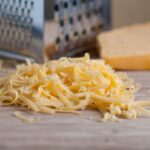Dive into a world of creamy, comforting casseroles without the dairy! This exploration unveils a treasure trove of delicious, dairy-free recipes, each bursting with vibrant colors and textures. Imagine the rich, savory depths of a mushroom casserole, the bright, herbaceous notes of a spinach creation, or the sweet, nutty warmth of a butternut squash delight. We’ll uncover the secrets to crafting these satisfying dishes, exploring diverse flavor profiles and adaptable cooking techniques to suit every palate and dietary need. Prepare to discover how easy it is to enjoy classic comfort food, reimagined for a dairy-free lifestyle.
From mastering the art of substituting dairy alternatives to perfecting the balance of flavors and textures, we’ll guide you through every step. We’ll delve into the nuances of different cooking methods, showcasing how each impacts the final result, ensuring your dairy-free casseroles are not only delicious but also visually stunning. Whether you’re a seasoned cook or a culinary novice, this guide provides the knowledge and inspiration to create unforgettable, dairy-free comfort food.
Exploring Flavor Profiles Without Dairy

Dairy-free cooking opens a world of exciting flavor possibilities, allowing for creative exploration beyond traditional creamy casseroles. By thoughtfully selecting spices, herbs, and alternative milk options, you can craft richly satisfying and flavorful dishes that are completely free from dairy. This section will delve into three distinct flavor profiles, highlighting the key ingredients and techniques for achieving delicious results.
Mediterranean Flavor Profile in Dairy-Free Casseroles
A vibrant Mediterranean casserole bursts with the fresh flavors of sun-drenched herbs and vegetables. To achieve this profile, consider using a base of hearty vegetables like zucchini, eggplant, bell peppers, and artichoke hearts. The aromatic backbone comes from herbs like oregano, thyme, and rosemary, while garlic and lemon zest provide bright acidity and pungent notes. For a creamy texture without dairy, use full-fat coconut milk, which adds a subtle sweetness and richness that complements the Mediterranean flavors. A sprinkle of crumbled nutritional yeast can mimic the cheesy quality of traditional casseroles, adding a savory depth. A drizzle of high-quality olive oil before serving adds a finishing touch of Mediterranean flair.
Mexican Inspired Dairy-Free Casseroles
Mexican-inspired casseroles offer a fiery and flavorful experience, relying on a blend of warm spices and fresh ingredients. Corn, black beans, and poblano peppers form a vibrant and hearty base. The spice profile is built around chili powder, cumin, smoked paprika, and a touch of cayenne pepper for heat. Fresh cilantro and lime juice provide a refreshing counterpoint to the spices. For a creamy element, cashew cream is an excellent choice. Soaked cashews blended with water and a touch of lime juice create a velvety smooth sauce that doesn’t overpower the other flavors. This casserole can be further enhanced with the addition of corn tortillas, creating layers of texture and flavor.
Asian-Inspired Dairy-Free Casseroles
Asian-inspired casseroles provide an opportunity to explore the complex and nuanced flavors of East Asian cuisine. This could feature a base of tofu, shiitake mushrooms, and bok choy, offering a mix of textures and umami richness. The flavor profile hinges on ginger, garlic, soy sauce, and sesame oil. A touch of rice vinegar adds brightness and acidity. For creaminess, consider using full-fat coconut milk, which adds a richness that is surprisingly compatible with Asian flavors. Toasted sesame seeds provide a nutty crunch, adding another layer of texture and flavor. A sprinkle of chopped scallions adds a fresh, vibrant garnish.
Cooking Techniques and Their Impact
Different cooking techniques significantly impact the texture and flavor of dairy-free casseroles. Baking creates a golden-brown crust and allows for even cooking, resulting in tender vegetables and a cohesive casserole. A baked dairy-free vegetable and tofu casserole, for example, develops a delightful crispness on the top while remaining moist and flavorful within. Slow cooking, on the other hand, results in intensely flavored dishes with a softer, more tender texture, ideal for tougher vegetables or meats. A slow-cooked lentil and vegetable casserole, cooked low and slow, would develop deeper, richer flavors. Stovetop cooking allows for quick preparation and the ability to adjust seasonings easily, resulting in a more rustic, less refined texture. A stovetop quinoa and vegetable casserole, for instance, can be cooked quickly and easily, with a slightly looser, more textured result.
Dairy-Free Milk Alternatives and Their Suitability
A variety of dairy-free milk alternatives are available, each with its unique properties impacting the final dish. Almond milk offers a mild, slightly nutty flavor and works well in lighter casseroles where its subtle flavor won’t overpower other ingredients. Soy milk provides a slightly richer, creamier texture and a more neutral flavor, making it a versatile option for many casserole recipes. Coconut milk, with its distinct flavor and richness, is best suited for dishes where its coconut notes complement the other ingredients, such as those with Asian or Caribbean influences. The choice of milk alternative should depend on the desired flavor profile and texture of the final casserole. For example, a creamy texture is more easily achieved with soy or coconut milk compared to almond milk.
Embarking on a dairy-free culinary adventure doesn’t mean sacrificing the warmth and satisfaction of classic casserole recipes. This journey has unveiled a spectrum of possibilities, showcasing the versatility of dairy-free alternatives and the boundless creativity in adapting beloved dishes. With a deeper understanding of flavor profiles, cooking techniques, and ingredient substitutions, you are now equipped to craft a symphony of flavors and textures in your kitchen. So, gather your ingredients, unleash your creativity, and prepare to delight your taste buds with a world of delicious, dairy-free casseroles—a testament to the fact that comfort food can be both satisfying and health-conscious.
FAQ Explained
Can I freeze dairy-free casseroles?
Yes, many dairy-free casseroles freeze well. Allow them to cool completely before freezing in airtight containers. Reheat gently until thoroughly warmed.
What are some good thickeners for dairy-free casseroles?
Cornstarch, arrowroot powder, or tapioca starch are excellent thickeners for creamy dairy-free sauces. Experiment with different amounts to achieve your desired consistency.
How can I prevent my dairy-free casserole from becoming dry?
Add a little extra liquid (broth, milk alternative) or use a higher moisture vegetable to prevent dryness. Consider adding a small amount of oil or dairy-free butter for richness.
Are all dairy-free milk alternatives interchangeable?
No, different milk alternatives have varying flavors and textures. Coconut milk imparts a distinct coconut flavor, while almond milk is milder. Choose the milk alternative that best complements the flavor profile of your casserole.


